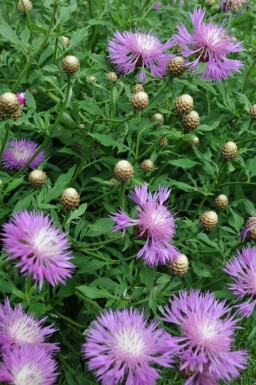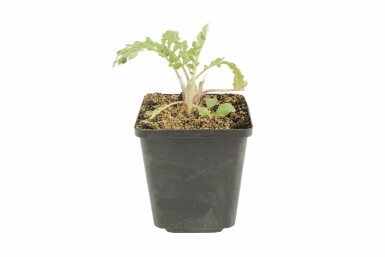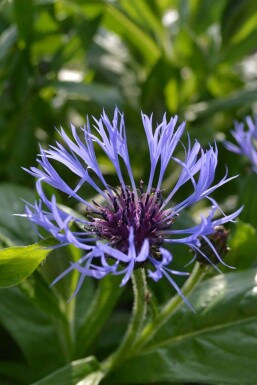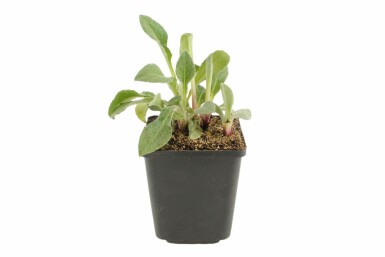

70cm




The Centaurea genus, with its common names ranging from cornflowers to Knapweeds and star-thistles, is a delightful addition to any garden, offering a tapestry of color with its purple, pink, and blue blossoms. These herbaceous species are known for their unique flower heads and are treasured for their ability to attract beneficial pollinators. With foliage colors that vary from green to grey, Centaurea plants provide an elegant contrast in texture and hue, making them a versatile choice for gardeners seeking to create a dynamic landscape. At Heijnen Plants, we cultivate these beautiful species with the utmost care, ensuring that each plant will bring vibrant life to your outdoor space.


70cm






40cm






50cm


Centaurea, commonly known as cornflowers, knapweeds, and star-thistles, represents a genus of flowering plants that grace gardens with their vibrant and varied hues. Known for their striking flowers that bloom in shades of purple, pink, blue, and red, these plants are a favorite among gardeners looking to add a splash of color to their borders, group plantings, or edges. With their bushy spreading growth habit, Centaurea species are perfect for creating textured and dynamic garden displays.
Centaurea plants are not only beautiful but also versatile and resilient. They thrive in a range of well-drained soil types and can tolerate both sun and partial shade. Their flowering period spans from May through August, ensuring a long-lasting display of color throughout the warmer months. The foliage remains a lush green across spring and summer, complementing the vivid flower colors.
This genus is deciduous, meaning that it will shed its foliage at the end of the autumn season, allowing for a rest period before the next burst of growth in spring. Centaurea's average water needs make it a manageable addition to any garden, requiring only regular watering to maintain its beauty.
To get the most out of your Centaurea plants, consider the following tips:
With the right care and a little attention, Centaurea can become a long-lasting and enchanting feature in any garden, bringing joy with their delightful blooms year after year.
Embrace the rustic charm and vibrant hues of the Centaurea genus, a delightful collection of ornamentals that bring a touch of wildflower grace to any garden. Known commonly as cornflowers, knapweeds, and star-thistles, these plants are cherished for their distinctive bloom shapes and the enchanting appeal they lend to borders and flower beds. With their resilience and captivating beauty, they are a prized choice for gardeners seeking a splash of color and a hint of meadow-inspired whimsy.
We would like to provide some tips on how to plant and care for a Centaurea. By following these tips, you can be sure to enjoy your Centaurea for a long time.
The species thrives best in locations that receive full sun to partial shade, allowing its vibrant blossoms to flourish in a brilliant display throughout its flowering months. While Centaurea is adaptable to a variety of soil conditions, it is imperative that the selected site boasts well-drained soil to prevent waterlogging, which the plant cannot tolerate. Ideal for border and group plantings, as well as edging, this plant adds texture and color to the garden with its lush green foliage that transitions through the seasons.
For optimal establishment, Centaurea should be planted in a location that receives full sun to partial shade, where it can benefit from the warmth and light. The species thrives in a wide range of well-drained soils, making it versatile for various garden designs. When planting, ensure there is adequate space for the bushy spreading growth habit to flourish without competition. It's advisable to plant during cooler periods of the day or when the weather is overcast to reduce transplant shock. Regular watering after planting is essential to develop a robust root system, although once established, the plant has average water needs.
To ensure the vibrant display of colors and maintain the bushy spreading growth habit, Centaurea benefits from regular fertilization. As these species thrive in well-drained soil of various types, a balanced granular fertilizer should be applied in early spring to support the onset of new growth and prepare the plants for the flowering season. A second application in midsummer can help sustain the plant's energy for continued blooming through the warmer months.
When fertilizing, scatter the granules around the base of the plant, taking care to avoid direct contact with the foliage to prevent any potential burn. Watering the area after applying fertilizer helps to integrate nutrients into the soil, making them more readily available to the plant's roots. Regular feeding following this method will contribute to a robust and floriferous Centaurea throughout its growing season.
Regular pruning of Centaurea is beneficial for both aesthetic and health reasons. Deadheading, or the removal of spent flowers, encourages a bushier growth and stimulates further blooming throughout the growing season. As soon as the blossoms begin to fade, trim them away to maintain a neat appearance and to prevent the plants from self-seeding excessively. This practice is essential from spring through summer, ensuring a continuous display of vibrant blooms in hues of purple, pink, blue, and red.
Centaurea species thrive with an average water supply, particularly flourishing in well-drained soil types. While they can adapt to various moisture levels, ensuring consistent watering during their blooming period, which spans from May to August, is crucial. It is essential to provide them with sufficient hydration, especially when they are exposed to full sun. Inadequate water can lead to stress, especially in the absence of regular rainfall. Water these plants deeply to encourage strong root growth, but take care not to overwater, as they are not drought resistant and can suffer in overly saturated conditions.
The Centaurea genus offers an array of ornamental benefits that are often overlooked. Their vibrant blooms not only add a splash of color to your garden but also serve as a magnet for pollinators, enhancing the ecological value of your outdoor space. These hardy plants, nestled in their pots, adapt well to a variety of soil conditions, making them a versatile choice for gardeners looking to create a low-maintenance but visually striking landscape.
To maintain the vitality and enhance the flowering of Centaurea, division is recommended every few years. This process rejuvenates the plant and sustains its bushy, spreading growth habit. The optimal times for division are during the cooler temperatures of spring or autumn. Carefully extricate the plant, ensuring to preserve the roots, then gently separate it into smaller sections. Replant these segments at the same depth they were originally, allowing ample space for future expansion. This method of propagation not only stimulates robust new growth but also contributes to the overall health of the plant.
The Centaurea genus offers an exquisite addition to any garden with its striking, thistle-like blossoms. These plants are not only visually appealing but also attract a variety of pollinators, enriching the biodiversity of your outdoor space. Their ease of care makes them a delightful choice for gardeners of all levels.
